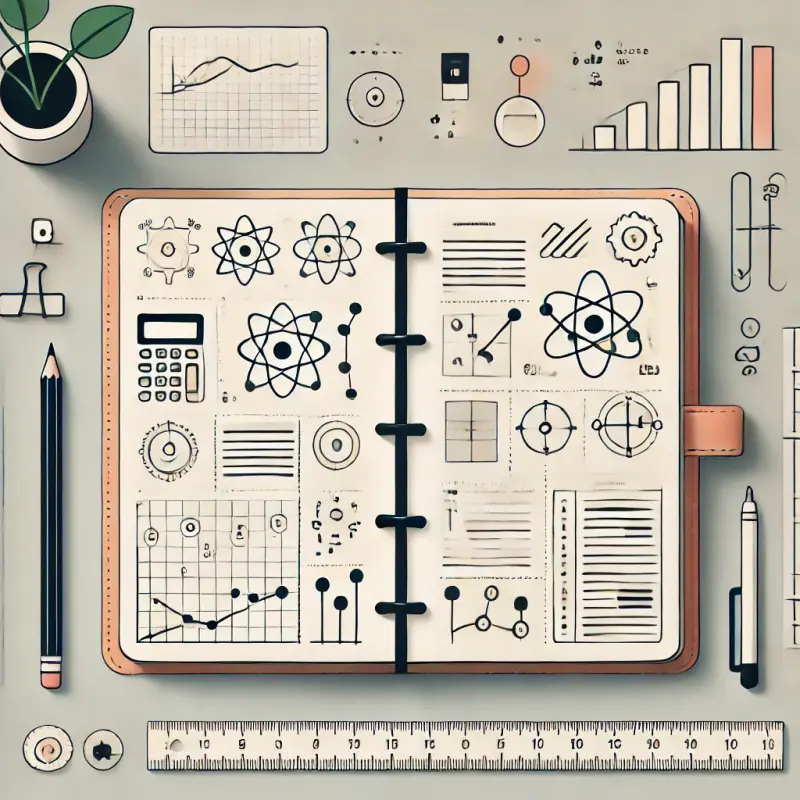How to Build Understanding of Scientific Topics Through Note-Taking: Tips and Structure
Introduction
Understanding scientific topics often requires processing complex information, making note-taking a crucial skill for students and professionals alike. Well-organized notes help break down intricate concepts, clarify key points, and reinforce learning through active engagement. This article provides tips and a step-by-step structure for effective note-taking to help you master scientific subjects with ease.
Why Effective Note-Taking is Essential for Scientific Topics
- Simplifies Complexity: Notes condense complex theories, data, and equations into digestible chunks.
- Enhances Retention: Writing down key points strengthens memory and understanding.
- Encourages Active Engagement: Taking notes keeps you focused and engaged with the material.
- Facilitates Review: Well-structured notes make studying and revising more efficient.
- Promotes Critical Thinking: Summarizing and paraphrasing information helps you process and analyze concepts.
Steps to Effective Note-Taking for Scientific Topics
1. Prepare Before the Lecture or Reading
- Skim the material in advance to identify key themes or concepts.
- Write down any questions or terms you’re unfamiliar with to address during the session.
2. Choose a Note-Taking Method That Works for You
-
The Cornell Method
- Divide the page into three sections:
- Main Notes: For detailed information.
- Cue Column: For keywords, questions, or topics.
- Summary: For a brief recap of the page’s content.
- Divide the page into three sections:
-
Mind Mapping
- Use a central theme with branches for subtopics, diagrams, or equations.
- Great for visual learners tackling interconnected scientific concepts.
-
Outline Method
- Use headings, subheadings, and bullet points to organize hierarchical information.
- Ideal for sequential data or logical processes.
-
Charting Method
- Create tables to compare data, concepts, or processes.
- Works well for experiments, chemical reactions, or biological systems.
3. Focus on Key Information
- Highlight:
- Definitions of key terms.
- Main arguments or hypotheses.
- Data, formulas, or diagrams.
- Examples or applications of the concept.
Tip: Avoid transcribing word-for-word; instead, summarize in your own words to enhance understanding.
4. Use Visuals to Reinforce Understanding
- Draw diagrams, flowcharts, or tables to simplify and organize information.
- Use color-coding for different sections or topics.
Example: A diagram of the water cycle with labels for evaporation, condensation, and precipitation.
5. Include Questions and Reflections
- Write down any questions you have while taking notes.
- Reflect on the implications or applications of the information.
Example: “How does this principle apply in real-world engineering scenarios?”
6. Review and Revise Regularly
- After the lecture or reading, go over your notes to fill in gaps or clarify points.
- Add additional insights or explanations to strengthen your understanding.
Structure for Scientific Notes
1. Title and Date
- Clearly label your notes with the topic and date for easy organization.
2. Objectives or Goals
- Include a brief statement of what you aim to learn.
Example: “Understand the steps of cellular respiration.”
3. Definitions and Key Terms
- List important terminology with concise definitions.
Example: “ATP: Adenosine triphosphate, the primary energy carrier in cells.”
4. Main Content
- Use your chosen method (Cornell, mind map, etc.) to capture key points.
5. Examples and Applications
- Include practical examples to contextualize abstract concepts.
Example: “Newton’s Third Law: Action-reaction pairs in a rocket launch.”
6. Summary and Reflection
- Write a short summary of the key takeaways.
- Reflect on what was most challenging or interesting.
Tips for Organizing Your Notes
- Use Technology Wisely
- Digital tools like Notion, OneNote, or Evernote allow for searchable and organized notes.
- Apps like GoodNotes or Microsoft Whiteboard support handwritten diagrams and annotations.
- Create a Consistent Format
- Use the same layout or template for all your notes to make them easier to navigate.
- Incorporate Color and Symbols
- Use highlighters, sticky notes, or symbols (e.g., stars for important points) to emphasize critical information.
- Maintain a Table of Contents
- For long-term projects, keep a master index of your notes for quick reference.
Examples of Using Notes for Scientific Topics
Physics: Understanding Newton’s Laws of Motion
- Key Terms: Force, inertia, acceleration.
- Main Notes: Write the three laws with real-world examples like car crashes or space travel.
- Diagram: Illustrate the forces acting on a moving car.
Biology: The Process of Photosynthesis
- Title: “Photosynthesis: Light Reactions and Calvin Cycle.”
- Visuals: A diagram of chloroplasts with labeled parts.
- Questions: “How does light intensity affect photosynthesis rates?”
Benefits of Structured Note-Taking for Scientific Topics
- Improved Retention: Writing and organizing information reinforces memory.
- Clear Understanding: Notes provide clarity on complex concepts.
- Efficient Revision: Organized notes save time during exam preparation.
- Increased Focus: The act of note-taking keeps you engaged and attentive.
Common Challenges and Solutions
1. Information Overload
- Solution: Prioritize key points and avoid writing down everything verbatim.
2. Difficulty Understanding Concepts
- Solution: Use additional resources like videos, textbooks, or discussions to clarify confusing topics.
3. Disorganized Notes
- Solution: Review and rewrite messy notes, using a consistent format.
Conclusion
Taking effective notes is a cornerstone of understanding scientific topics. By using structured methods, focusing on key points, and incorporating visuals, you can transform your note-taking process into a powerful learning tool. Whether you’re tackling physics equations or biological processes, these strategies will help you organize information, retain knowledge, and boost your academic success. Start implementing these techniques today to take your learning to the next level!
Artykuły
Subskrybuj nasze powiadomienia, aby dostawać na bieżąco najnowsze i najbardziej wciągające artykuły na swoją pocztę!
